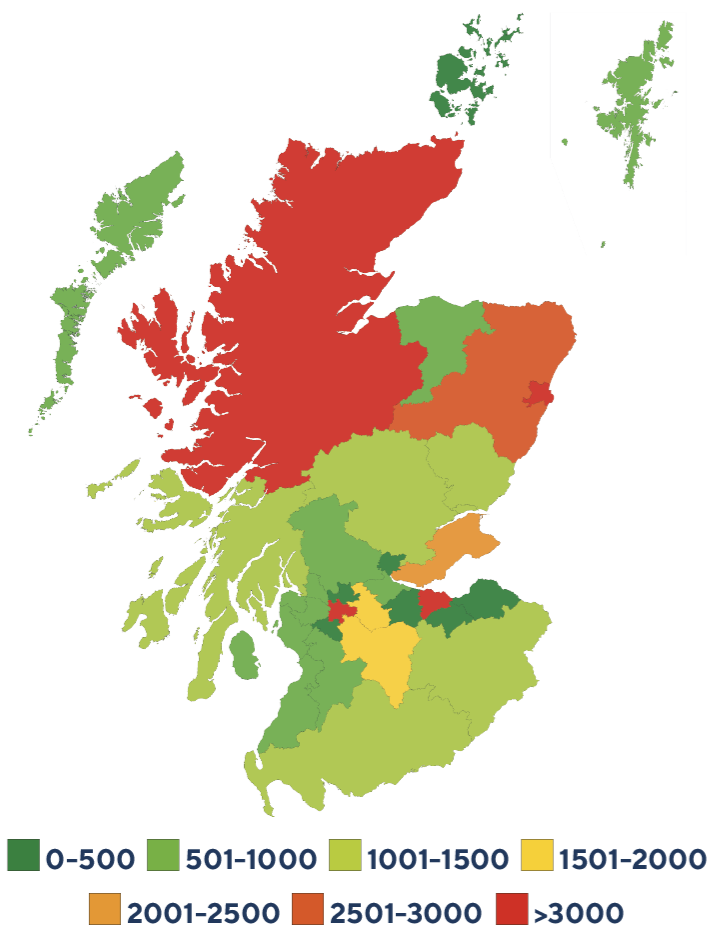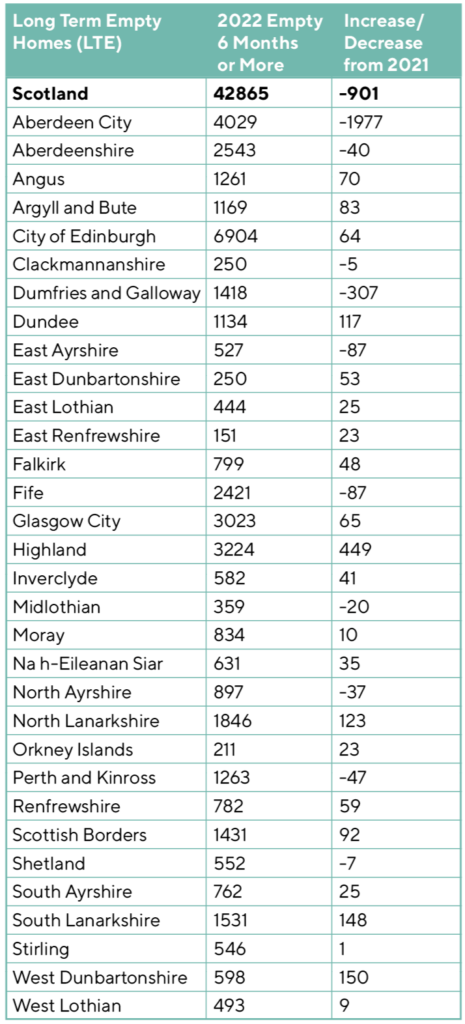Uploaded 15/06/23
Annual Impact Report 2022 - 2023
Figures published by the Scottish Government in January showed that the number of homes empty for six months or longer had fallen by 2% from 43,766 to 42,865. This is the second year in a row that the number of long term empty homes in Scotland has fallen.
Number of long term empty homes in Scotland by local authority


The figures divide into homes that have been empty for between 6 and 12 months and those that have been empty for longer than a year.
Over 27,000 of Scotland’s homes are empty for longer than 12 months and we know that the longer homes remain empty the harder it becomes to bring them back to use.
This is shown by the fact that, in spite of the total number of homes empty falling for a second year running – from 27,854 to 27,692 this year, preceded by a larger fall from 30,551 last year – the numbers are still far higher than they ought to be. Many of these homes are likely to be also amongst the 23,358 homes that reported as empty for more than a year five years previously in 2017. Many of these may also have been part of the 16,527 homes empty for more than a year reported in 2014.
The figures highlight the uneven distribution of empty homes. The numbers of empty homes are spread across Scotland’s local authorities, but it is notable that more than 51% of all reported long term empty homes and more than 52% of homes empty for longer than 12 months are distributed across 6 local authorities. In contrast, these authorities combined account for just under 42% of all homes in Scotland.
However, even in local authorities with lower numbers of long-term empty homes overall, there are still areas where levels of empty homes are above the national average. Additionally, all long term empty homes can still make an important contribution to housing stock when they are brought back to use. Over the next twelve months we will continue our work to provide more detailed data on how empty homes are distributed across Scotland as a whole and within individual local authorities.
As ever, the figures for numbers of long term empty homes, particularly for homes empty for 6 to 12 months, reflect the local housing markets and the wide range of socio-economic factors that are the backdrop to the work of EHOs. Increasing numbers of homes becoming long term empty in some parts of the country show the additional challenges faced in bringing homes back to use in those areas.
For this reason, these figures say far less about the work and achievements of EHOs than the number and variety of homes they are helping to returning to use do. 2022 has seen the second highest total of homes brought back to use in the history of the partnership.
This is a fantastic achievement that we are proud to celebrate in this report. However, we know that the commitment and hard work of EHOs can only take us so far in tackling the problem of long term empty homes in Scotland, and long term empty homes themselves can only ever be a small part of the overall answer to the housing emergency that Scotland is facing.
Every home no longer empty counts and no effort is wasted.

